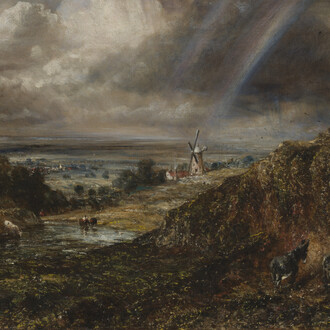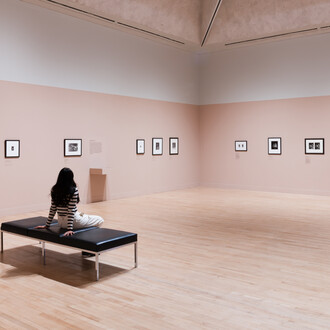Fighting History will celebrate the enduring significance and emotional power of British history painting through the ages. From the great, large scale 18th century history paintings by John Singleton Copley (1738 – 1815) and Benjamin West (1738- 1820) to 20th century and contemporary pieces by Richard Hamilton (1922 - 2011) and Jeremy Deller (b. 1966), the exhibition will explore how artists have reacted to key historical events, and how they capture and interpret the past. The exhibition will open at Tate Britain from 9 June 2015.
Often vast in scale, history paintings engage with important narratives from the past, from scripture and from current affairs. Some scenes protest against state oppression, while others move the viewer with depictions of heroic acts, tragic deaths and plights of individuals swept up in events beyond their control. Amy Robsart 1877 by William Frederick Yeames (1835-1918), which has been newly conserved for this exhibition, casts a spotlight on a historical mystery while John Minton’s (1917-1957) The Death of Nelson 1952 offers a tender perspective on the death of one of England’s greatest naval commanders.
During the 18th century history painting was deemed the pinnacle of an academic painter’s achievements. These paintings traditionally depicted a serious narrative with moral overtones, seen in John Singleton Copley’s The Collapse of the Earl of Chatham in the House of Lords, 7 July, 1778 1779-80. The way history was presented in these works was not a precise description of events, but aimed more towards the Italian istoria – a narrative that pleased the eye and stimulated the mind.
While some conventional accounts suggest that history painting died off in the nineteenth century, this exhibition shows the continuing vibrancy of the genre, as new artists have engaged with its traditions to confront modern tragedies and dilemmas. Richard Hamilton’s The citizen 1981-3 offers one illustration of this, highlighting the ‘troubles’ in Northern Ireland in the late 20th century. Jeremy Deller’s The Battle of Orgreave 2001, a re-enactment of the well-known 1984 protest in South Yorkshire, will also be featured. Comprised of videos, a map, a miner’s jacket and a shield amongst other things, the room will immerse visitors in a pivotal moment in the history of the miners’ strike.
The exhibition will also compare traditional and contemporary renderings of historical events from scripture, literature and the classical world. There will be a room dedicated to interpretations of the Deluge - the biblical flood that symbolizes both the end and the beginning of history - including JMW Turner’s (1775 – 1851) The Deluge 1805 and Winifred Knights’ (1899-1947) The Deluge 1920, which contains unmistakeable references to the former. There will also be a section focusing on depictions of antiquity, seen in works such as Sir Edward Poynter’s (1836-1919) A Visit to Aesculapis 1880 and James Barry’s (1741 – 1806) King Lear Weeping over the Dead Body of Cordelia 1786-8, which frames the Shakespearian tragedy in a scene of ancient Britain.
From Ancient Rome to recent political upheavals, Fighting History looks at how artists have transformed significant events into paintings that encourage us to reflect on our own place in history. It is curated by Greg Sullivan, Curator British Art 1750-1830, Tate Britain and Assistant Curator Clare Barlow. The exhibition will be accompanied by a fully illustrated catalogue with contributions from Dexter Dalwood and a programme of talks and events in the gallery.



















